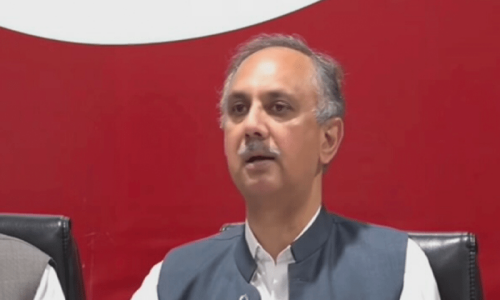The US National Weather Service, National Oceanic and Atmospheric Administration (NOAA) defines a heatwave as a period of abnormally and uncomfortably hot and unusually humid weather, typically lasting two or more days.
Geneva-based World Meteorological Organization (WMO) has a number of definitions of heatwave. One such definition is: a marked unusual hot weather (maximum, minimum and daily average) over a region persisting at least two consecutive days during the hot period of the year based on local climatological conditions, with thermal conditions recorded above given thresholds.
In order to understand the heatwave, it is necessary that the basics governing the phenomenon are known. The readings of air temperature (also known as dry-bulb temperature) given by the meteorological agency are recorded in a “shade”, typically at two meters above the ground. The temperature under “direct sunlight” is higher, by about five to eight degrees Celsius, depending on air movements.
Another important concept is that of apparent temperature, or the temperature that body feels. The process of evaporation requires heat. As the body temperature increases it perspires. Evaporation of that bodily moisture takes heat from the body in order to cool itself. The higher the temperature the more it perspires in the attempt to cool itself.
The impact can be direct (physical damage to crops, animals and trees), or indirect (loss of potential production, lost capacities, and increased costs)
The rate of evaporation is directly related to the amount of moisture in the atmosphere. As humidity increases, the rate of evaporation of perspiration decreases. At the decreased rate of evaporation, the body’s heat is not removed efficiently. Therefore, the body ‘feels’ like the temperature is higher than it actually is. The apparent temperature takes into account the amount of moisture in the atmosphere to simulate how the body ‘feels’ how hot it is.
For example, based on the heat index chart, developed by the US National Weather Service, National Oceanic and Atmospheric Administration, if air temperature is 38 degrees Celsius and the relative humidity is 40 per cent, the apparent temperature, or the temperature that body feels is 43 degrees Celsius.
In future, heatwaves will be more frequent and of greater severity. Human beings are themselves to be blamed for this. Heavy fossil-fuel burning adds more carbon dioxide to the atmosphere, which in turn traps the heat.
There are some environmental interventions that can, to some extent, minimise the severity of heatwaves. Installing white roofs helps reduce heat build-up in cities. Current research shows that making surfaces more light-reflecting can have a major impact on lowering high temperatures.
For instance, Los Angeles has coated several streets in a light grey paint to reduce road-top temperatures by as much as six degrees Celsius. Trees and green areas also beat the heatwaves.
The phenomenon of urban heat island is well known (countryside areas are cooler than city areas). In cities, the building materials and roads absorb solar radiation. The darker the surface, the more the heating. Fresh asphalt reflects only 4pc of sunlight compared to as much as 25pc for trees and grass. Rooftop gardens are now gaining momentum in many cities.
Impact on agriculture
There are two types of natural disasters: hydro-meteorological disasters (landslides, avalanches, droughts, famines, extreme temperatures, heatwaves, floods, hurricanes, forest fires, windstorms; waves, surges and insect infestation; and geophysical disasters (earthquakes and volcanic eruptions).
Agricultural activity is dependent on climate, weather, and water availability. Weather- and climate-related disasters adversely affect agricultural production.
The impact of a heatwave on agriculture can be direct (physical damage to crops, animals and trees caused by the extreme hydro-meteorological events), or indirect (loss of potential production owing to disturbed flow of goods and services, lost production capacities, and increased costs of production).
This impact can be tangible (one that can be easily measured in monetary terms) or intangible (anxiety or fear of future natural disasters, inconvenience, disruption, and stress-induced ill health).
Heatwave impacts crop growth and development at different levels like soil moisture uptake, root and shoot growth, photosynthesis, respiration, plant water uptake and final yield. Heatwave competes for soil moisture by hastened evaporation, leaving almost no moisture for uptake by plants. Heatwave also causes an overall environmental degradation, which is a major factor contributing to the vulnerability of agriculture, forestry and rangelands to heatwaves.
Quite often, poor people work on the agricultural lands. These under-nutritioned and weak poor people, when exposed to extreme heat, are simply knocked down health-wise. This is another factor that adversely affects agricultural problem.
Agricultural activity is also affected by water availability. Due to extreme heat all around, there is a great demand for water in municipal sectors, leaving restricted water for agriculture.
Sindh is currently experiencing heatwave with ambient temperatures in the range of 43-46 degrees Celsius. Heatwave occurred previously in the province in July 2015.
Unfortunately, there was no systematic and standardised data collection from the July 2015 episode. This is the major problem in dealing with natural disasters in agriculture, rangelands and forestry.
With no scientific data from the earlier episode, it will be difficult to adopt mitigation measures at present. The Sindh Agriculture University, Tando Jam, needs to become more active, learning from the previous disasters and taking corrective measures during the ongoing disaster.
The writer earned his Master of Engineering in Environmental Engineering from the Asian Institute of Technology, Bangkok, in 1975
Published in Dawn, The Business and Finance Weekly, May 28th, 2018













































